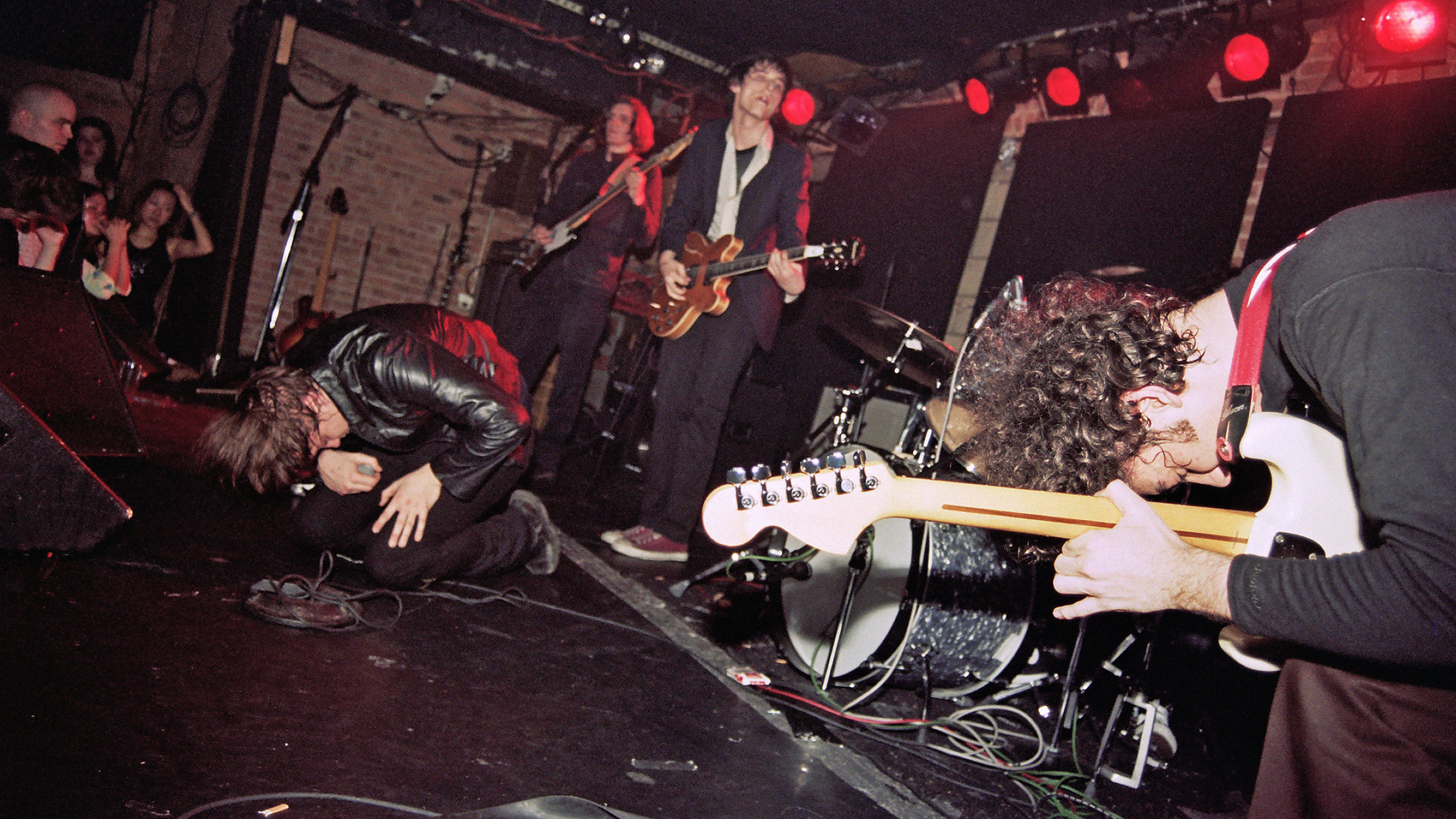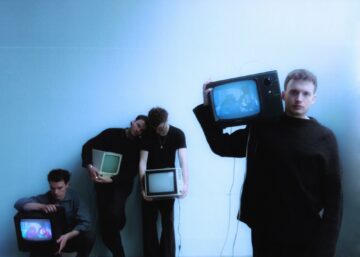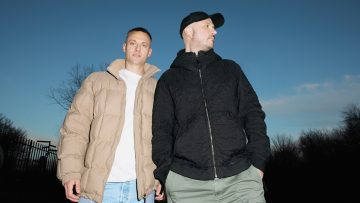★★★★☆
Meet Me In The Bathroom, the documentary from Dylan Southern and Will Lovelace based on Lizzy Goodman’s 2017 book, gets its UK cinema release this Friday. Telling the story of the 2000s New York music scene entirely from audio interviews and contemporaneous archive footage, it’s rough and raw like any good gig.
Few tracks capture the spirit of the early noughties New York music scene – and the new documentary covering the period, Meet Me In The Bathroom – like The Raptures’ ‘House of Jealous Lovers’.
Raucous, frenetic and periodically wild, the dance-punk tune was the lead single from the band’s second studio album, Echoes, and epitomised the unexpected success that could be wrought from this era’s heady experimentation.
In fact, it went on to become the best-selling single of Brooklyn’s DFA Records, which James Murphy, the mastermind behind electronic-rock outfit LCD Soundsystem, co-founded. In this way, too, it represents something else to be gleaned from Meet Me In The Bathroom; whilst we’re all-too-willing to impose the idea of a ‘scene’ onto a particular time and place of music (like Britpop over here, for instance), in actual fact, this was more a melting point with one band simply carving a path for others to quickly follow.
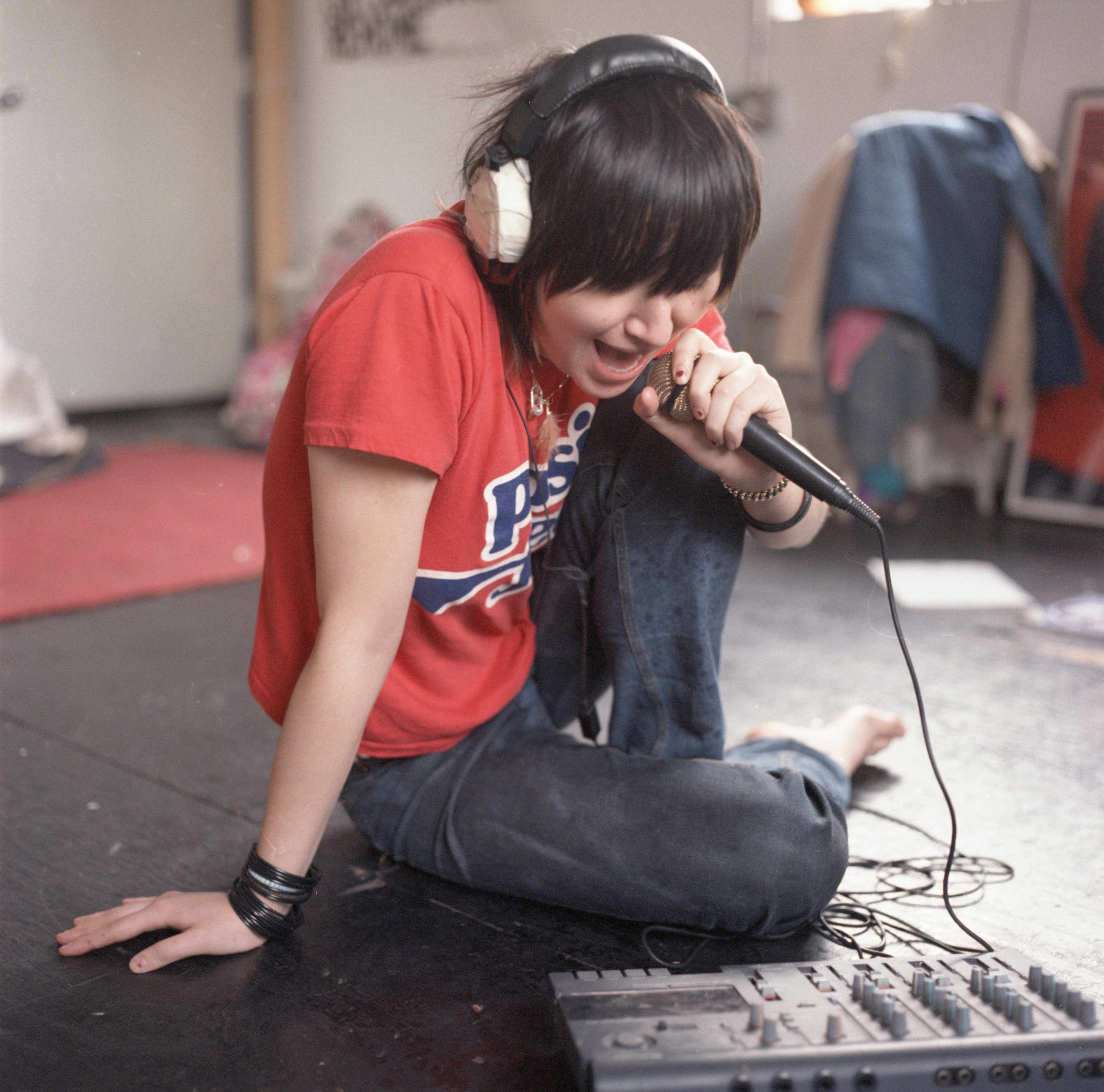
Karen O of Yeah Yeah Yeahs. Photo: Emily Wilson Photography
It just so happened that at the turn of the millennium, under the watchful gaze of The Empire State Building, they followed each other hard and fast. The Strokes. Yeah Yeah Yeahs. Interpol. TV On The Radio. The Moldy Peaches. And, of course, the aforementioned LCD Soundsystem, and indeed The Rapture.
Whilst a similar pattern links these bands and their assortment of characters together (chiefly, arriving in the Big Apple and wanting nothing more than to bang heads together over fuzzy guitars to assail boredom), they each added their own flavour to the musical output of the time – as well as a means of doing things.
Based on Lizzy Goodman’s 2017 oral history of the same, what directors Dylan Southern and Will Lovelace (as well as editors Andrew Cross and Sam Rice-Edwards) have achieved with this documentary is three-fold. Created entirely from audio interviews and raw, contemporaneous archive footage, the film tells the story of these bands, crucially in a nuanced way, and feels comprehensive, which, added together, gives an impression of the wider environment of the time – even if some may find this latter part frustratingly so.
In many ways, the documentary presents us with archetypal band stories. The Strokes, for instance, are perhaps the most quintessential, sexy rock n’ roll band of the bunch, with frontman Julian Casablancas racked by nerves and perfectionism as rhythm and lead guitarist Albert Hammond Jr. falls down the familiar path of drug abuse.
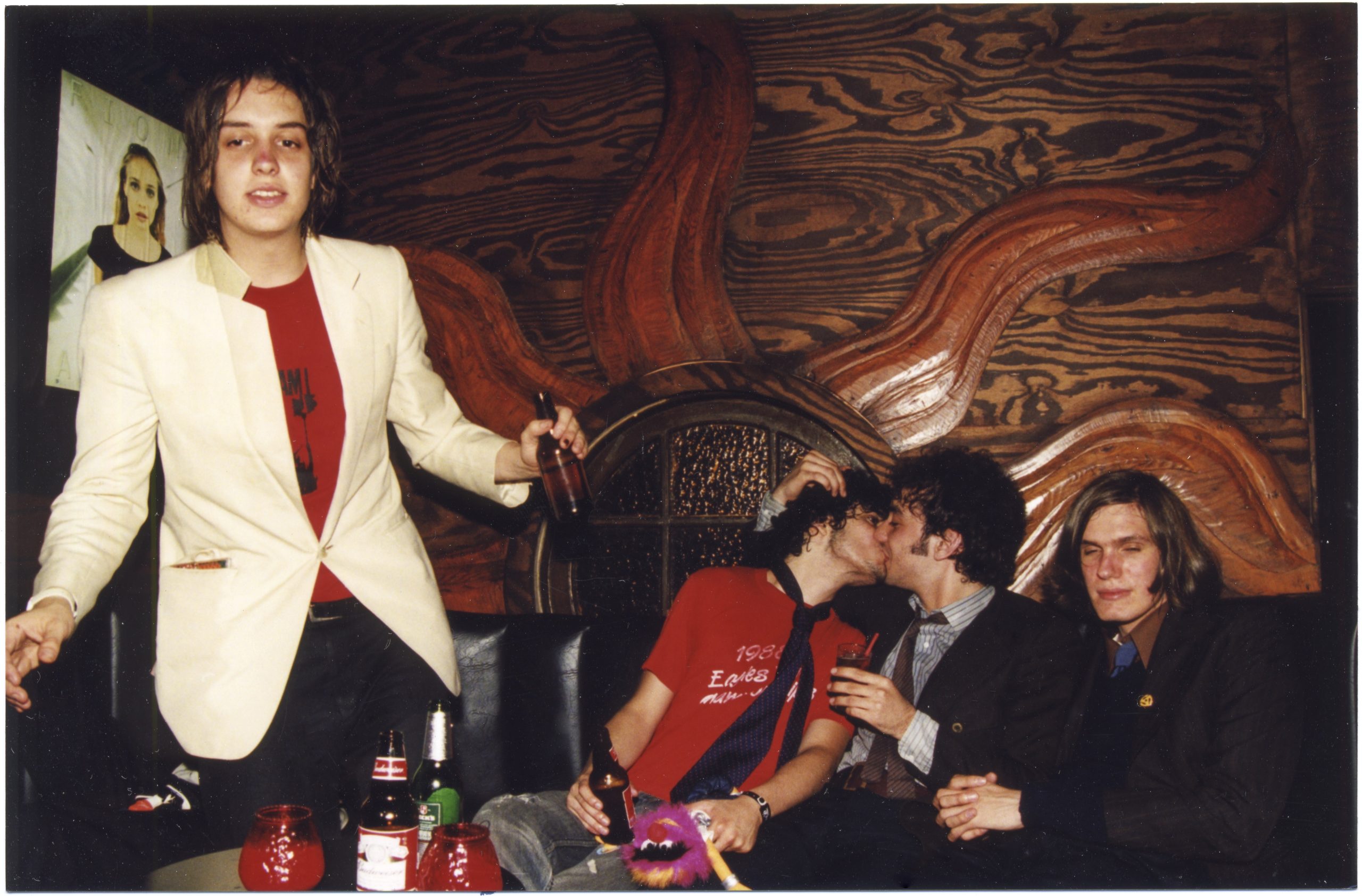
The Strokes. Photo: Piper Ferguson
Yeah Yeah Yeahs Karen O, meanwhile, was on the grounds of perpetual reinvention as one of the few female lead vocalists at the time, although faced the “incredibly lonely” place this was to be in. In an instance where any rose-tinted view of the time is smashed, she describes how paparazzi would shamelessly take “crotch shots” of her onstage.
However, the most intriguing narrative arc of all is that of James Murphy. It’s little wonder that Southern and Lovelace were also drawn to his story for their 2012 documentary Shut Up And Play The Hits, about LCD Soundsystem’s rumoured last concert. In their latest film, we get a wider panoply of Murphy’s story, from a lowly, disheartened studio engineer to starting LCD Soundsystem in his 30s – a feat that “seemed crazy” to bandmate Nancy Whang, she tells us.
The wider context isn’t the main focus. 9/11, though seismic, isn’t dwelled upon, save for a few touching moments; likewise, the gentrification of New York is only hinted at through TV On The Radio’s concerns over their rent tripling in three years.
And whilst it would be neither the TV nor the radio that would truly change the consumption of music, instead, the rise of the internet is touched on through the brief story of Interpol’s sophomore album, Antics, being leaked via Napster. (Not that the Manhattan rockers would care, despite the loss of revenue, “because people all round the world were listening to our music”).
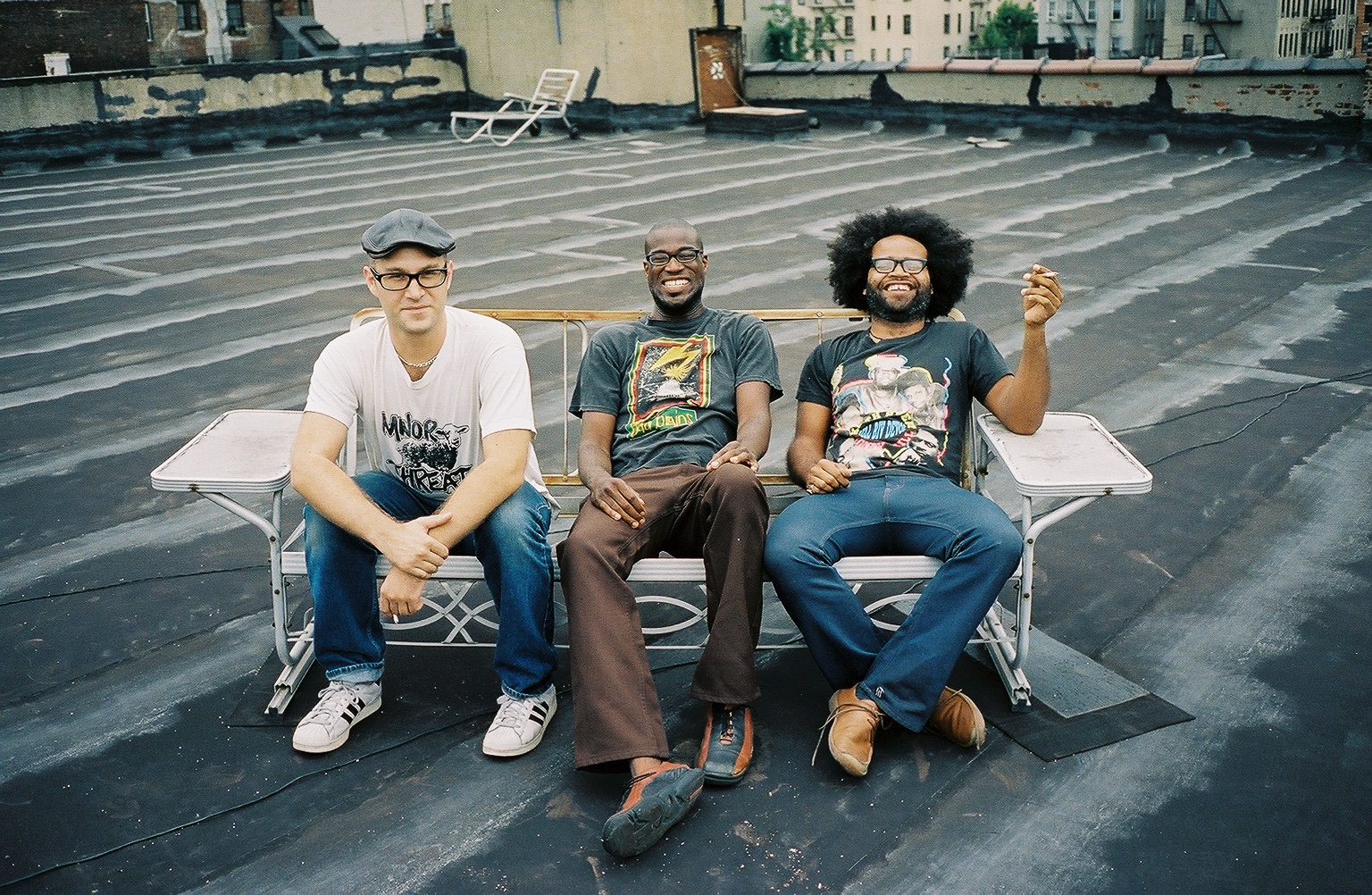
TV On The Radio. Photo: Ruvan Wijesooriya
Whilst some might lament the fact that Meet Me In The Bathroom leaves some wider contextual stones unturned, ultimately, it’s a price worth paying for a documentary that gives you what you want: pure, unadulterated footage of the bands, delivering the story as it unfolded at the time.
Sandwiching the documentary with quotes from Walt Whitman’s ‘Give Me The Splendid Silent Sun’ is the only real bit of artificial supplement. The rest is raw, honest and up-close like any good gig should be.

